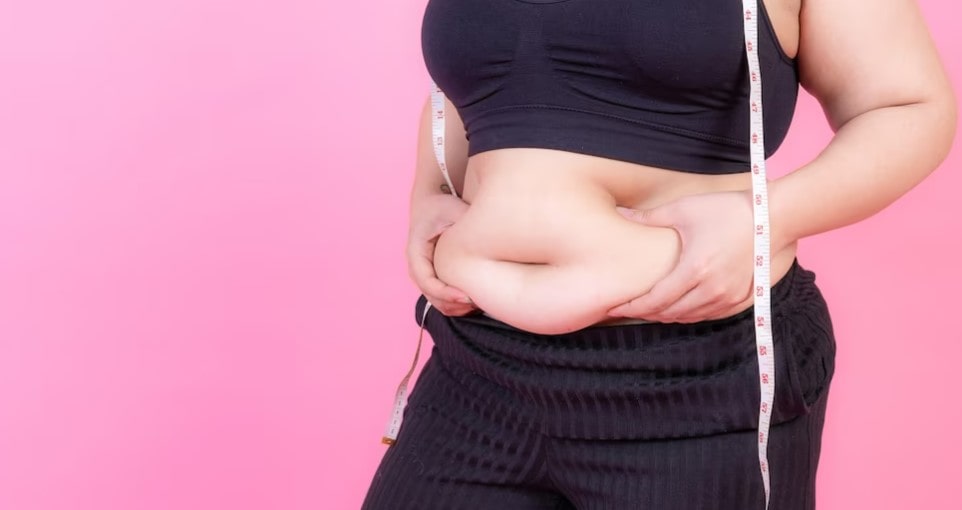Living a healthy lifestyle goes beyond just focusing on the numbers on the scale. Body composition plays a crucial role in determining overall health, and one key aspect to consider is body fat distribution. This article aims to explore the different types of body fat and what they can reveal about your health. By understanding the implications of body fat distribution, you can take steps to improve your well-being and make informed decisions about your fitness journey.
Understanding Body Fat:

Before delving into the specifics of body fat types, it’s essential to understand what body fat is and why it is necessary for our bodies. Body fat, also known as adipose tissue, serves several important functions. It provides insulation, cushions organs, and serves as an energy reserve. However, excessive body fat can lead to health issues and increase the risk of various diseases.
Why Body Fat is Healthy:
Contrary to popular belief, body fat is not inherently bad. It’s important to have a certain amount of body fat for optimal health. Fat cells produce hormones that regulate metabolism, reproduction, and immune function.
Furthermore, body fat acts as a protective layer for organs and helps regulate body temperature. However, the key lies in maintaining a healthy body fat percentage and ensuring proper distribution.
Abdominal Fat: The Dangerous Type:

Excess fat accumulation in the abdominal area, commonly referred to as visceral fat, is associated with an increased risk of various health conditions, including heart disease, type 2 diabetes, and certain cancers.
Visceral fat is metabolically active and releases inflammatory substances that can contribute to insulin resistance and chronic inflammation. Individuals with an apple-shaped body tend to have more abdominal fat.
Upper Arm Fat: The Flabby Arms:

Another common area where body fat tends to accumulate in the upper arms. Flabby arms not only affect the physical appearance but may also indicate an underlying health issue. Excessive fat in this area could be a sign of poor diet, lack of physical activity, or hormonal imbalances. It’s essential to focus on overall fat reduction rather than spot reduction to achieve toned arms.
Hips and Sides: Pear-shaped Body:

People with pear-shaped bodies tend to have fat deposited around their hips and sides. This subcutaneous fat is relatively less harmful than abdominal fat, but it can still contribute to health risks.
Pear-shaped individuals may have a lower risk of developing cardiovascular diseases compared to those with an apple-shaped body. However, maintaining a healthy weight and engaging in regular exercise is crucial for overall well-being.
Lower Back and Waist: Love Handles:

Love handles, also known as excess fat around the lower back and waist, can be stubborn and challenging to get rid of. This type of fat is often associated with a sedentary lifestyle and poor dietary choices. Love handles not only impact physical appearance but may also indicate an increased risk of cardiovascular disease. Adopting a healthy eating plan and incorporating targeted exercises can help reduce love handles.
Body Fat Distribution and Health Risks:
The distribution of body fat is an essential factor to consider when assessing health risks. Research has shown that individuals with a higher waist-to-hip ratio and excess abdominal fat have an increased risk of developing cardiovascular diseases, type 2 diabetes, and metabolic syndrome.
The presence of excess body fat, particularly around the abdominal area, can disrupt the balance of hormones and contribute to insulin resistance and chronic inflammation. Therefore, understanding your body fat distribution can provide valuable insights into your overall health status.
Measuring Body Fat Percentage:
To determine your body fat distribution and overall body fat percentage, various methods can be used. These include skinfold calipers, bioelectrical impedance analysis (BIA), dual-energy X-ray absorptiometry (DXA), and more advanced techniques like magnetic resonance imaging (MRI) and computed tomography (CT) scans.
Consulting with a healthcare professional or a registered dietitian can help you accurately assess your body fat levels and identify any areas of concern.
Tips for Reducing Unhealthy Body Fat:
If you find that your body fat distribution is indicating potential health risks, it’s essential to take proactive steps toward reducing unhealthy body fat. Here are some practical tips to help you on your journey:
- Follow a Balanced Diet: Focus on consuming a variety of nutrient-dense foods, including fruits, vegetables, lean proteins, whole grains, and healthy fats. Limit your intake of processed foods, sugary beverages, and saturated fats.
- Engage in Regular Physical Activity: Incorporate both cardiovascular exercises and strength training into your fitness routine. Cardiovascular exercises like jogging, swimming, or cycling can help burn overall body fat, while strength training builds lean muscle, which increases your metabolism.
- Practice Portion Control: Be mindful of your portion sizes to avoid overeating. Pay attention to hunger and fullness cues and aim to eat until you are satisfied, not overly stuffed.
- Manage Stress Levels: Chronic stress can contribute to weight gain and unhealthy fat deposition. Find healthy ways to manage stress, such as practicing mindfulness, engaging in hobbies, or seeking support from friends and family.
- Get Sufficient Sleep: Lack of sleep disrupts hormonal balance and can lead to increased appetite and cravings. Aim for 7-9 hours of quality sleep each night to support your overall health and weight management goals.
Conclusion:
Understanding your body fat type and distribution provides valuable insights into your health status and potential risks. While body fat is essential for various bodily functions, excessive or unhealthy fat accumulation can lead to increased health risks.
By adopting a balanced diet, engaging in regular physical activity, managing stress levels, and getting sufficient sleep, you can take proactive steps towards maintaining a healthy body fat percentage and overall well-being.
FAQs
Is it possible to spot and reduce body fat in specific areas? Spot reduction of body fat is a common misconception. While targeted exercises can help strengthen and tone specific muscles, they do not directly lead to fat loss in that area. Overall fat reduction through a combination of diet, cardio exercises, and strength training is the most effective approach.
How can I measure my body fat percentage at home? While various methods exist, home-based body fat scales that use bioelectrical impedance analysis (BIA) are commonly available. However, it’s important to note that these scales may not provide the same accuracy as more advanced techniques used in professional settings.
Can genetics influence body fat distribution? Yes, genetics can play a role in determining body fat distribution. Some individuals may be predisposed to carry more fat in certain areas due to their genetic makeup. However, lifestyle factors, such as diet and exercise, still play a significant role in managing overall body fat levels.
Are there any supplements that can specifically target body fat reduction? While certain supplements may claim to target body fat reduction, there is limited scientific evidence to support these claims. It’s always best to focus on a balanced diet, regular exercise, and overall lifestyle changes for sustainable


